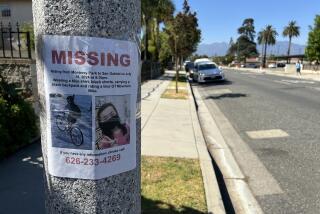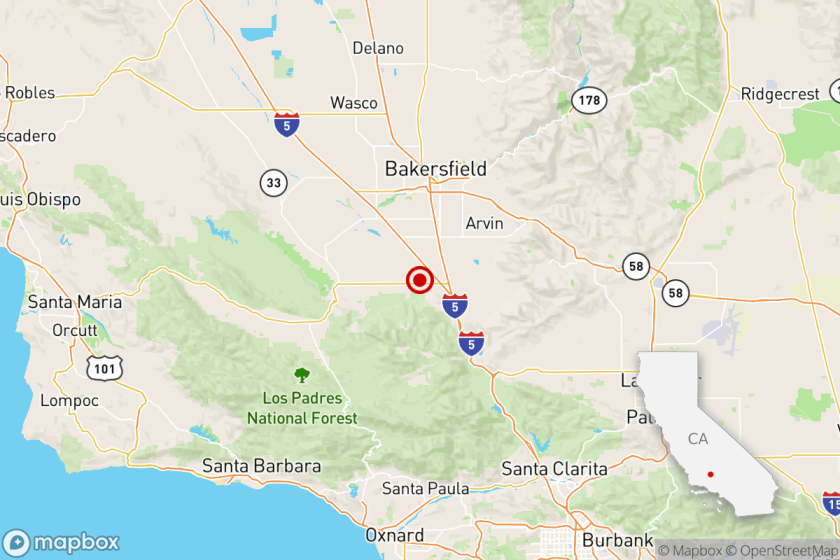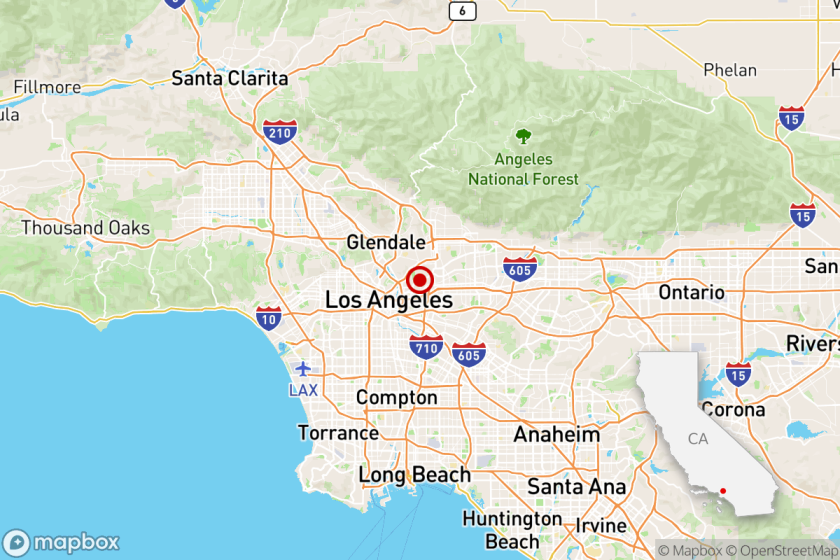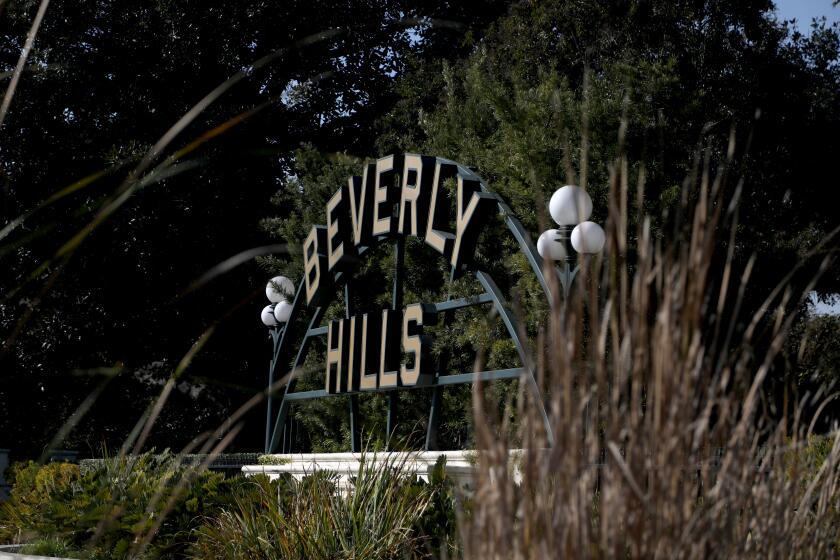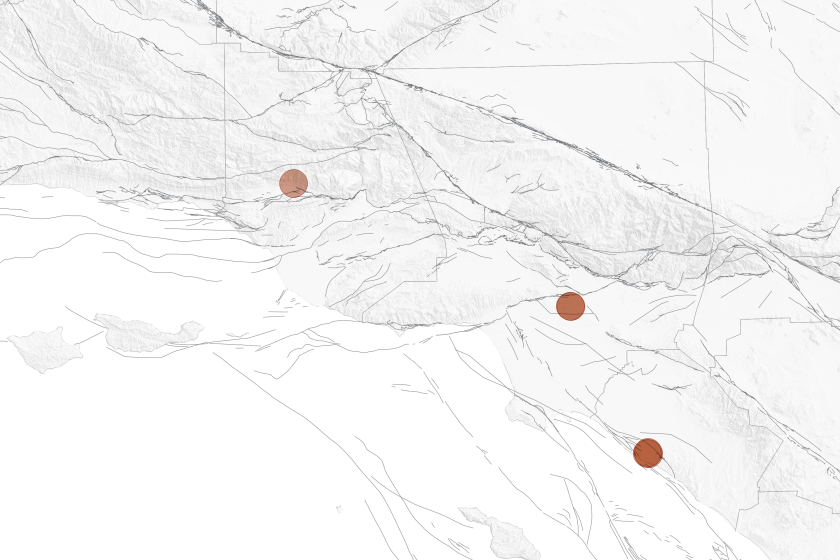5.0 Quake on San Andreas Fault Not Seen as Foreshock
Parkfield, the Central California hamlet on the San Andreas Fault where scientists have deployed an elaborate network of seismological instruments since 1985, had a 5.0 temblor early Tuesday, but scientists did not view it as a likely precursor of a larger quake.
The moderately strong 2:28 a.m. jolt was centered three miles west of Parkfield and was felt in a wide area, including Paso Robles and San Luis Obispo, causing only a few minor rockfalls that did no damage. Scientists have been expecting a 6.0 to 6.5 quake at Parkfield for about 10 years, but they said Tuesday’s temblor occurred just outside the area where it would be considered a foreshock.
Andrew Michael, a geophysicist with the U.S. Geological Survey, said the earthquake was centered five miles farther southeast along the San Andreas from the point where foreshocks to two magnitude 6 quakes took place in 1934 and 1966. On Tuesday morning, he said the chances were less than 10% that such a strong quake is in the offing by Friday.
Those chances decline every hour, and Michael said that by this morning the chance of a sizable quake by Friday would be down to between 2.5% and 5%.
“It was a good earthquake in its own right,” said Michael of Tuesday’s temblor. “But nobody’s holding his breath for a bigger one.”
In 1985, based on earlier, fairly evenly spaced magnitude 6 earthquakes near Parkfield in 1857, 1881, 1901, 1922, 1934 and 1966, scientists said there was a 95% probability of another such earthquake occurring by the beginning of 1993. The instruments were deployed in hopes of being able to detect exactly what led up to it and what happens while it is occurring.
But despite occasional alerts, no such quake has struck.
Scientists put Parkfield on “A alert” status in 1992 and 1993 after magnitude 4.7 and 4.8 earthquakes occurred near the sites of the 1934 and 1966 foreshocks, stating in each of those cases that there was a 37% chance of a larger earthquake striking within three days.
However, at a recent American Geophysical Union meeting, Michael and another Geological Survey scientist, Lucile Jones, presented a study indicating that those probabilities had been miscalculated and that the chance of the larger quake occurring those times should not have been higher than 8%.
More to Read
Sign up for Essential California
The most important California stories and recommendations in your inbox every morning.
You may occasionally receive promotional content from the Los Angeles Times.

